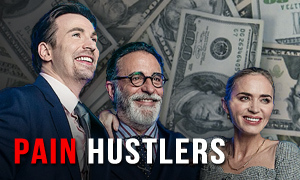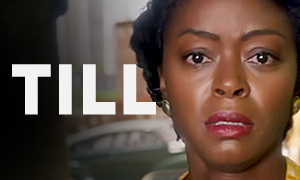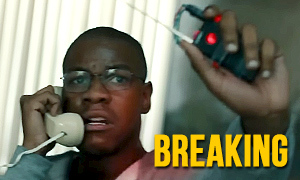Hustlers: History vs. Hollywood
| REEL FACE: | REAL FACE: |
Jennifer Lopez
Born: July 24, 1969 Birthplace: The Bronx, New York City, New York, USA | Samantha Barbash
Born: abt 1973 Renamed Ramona in the Movie |
Constance Wu
Born: March 22, 1982 Birthplace: Richmond, Virginia, USA | Roselyn 'Rosie' Keo
Born: abt 1984 Renamed Destiny in the Movie |
Lili Reinhart
Born: September 13, 1996 Birthplace: Cleveland, Ohio, USA | Karina Pascucci
Born: abt 1987 Renamed Annabelle in the Movie |
Julia Stiles
Born: March 28, 1981 Birthplace: New York City, New York, USA | Jessica Pressler
Born: August 5, 1977 Birthplace: Marblehead, Massachusetts, USA Renamed Elizabeth in the Movie |
How did ringleader Samantha Barbash come up with the idea to hustle the strip club's wealthy clients?
The Hustlers true story reveals that Samantha, who is portrayed by Jennifer Lopez in the movie, developed a scheme that she called "marketing," which is more commonly known as "fishing." She perfected it with the help of dancer Roselyn Keo (aka Rosie), played by Constance Wu. Samantha and Rosie first met at Larry Flynt's Hustler Club, a fitting name given their ploy. The idea basically involved three steps. 1. Go fishing by cold-calling a wealthy strip club client and tempting him with alluring texts and selfies. 2. Have one of the girls, usually Karina Pascucci or Marsi Rosen, meet up with the client, ply him with drinks and substances, and then convince him to come to the strip club (usually with the help of other girls who've arrived). 3. Once at the club, have multiple girls work him and wear out his credit card, making the strip club a lot of money while keeping a sizable commission.
Going fishing also included searching for wealthy married men at bars in New York City's Financial District. At first, the real women behind Hustlers targeted bars like TGI Friday's, but they eventually focused on more upscale locations that were frequented by affluent men.
Was Samantha Barbash a stripper?
Barbash, who was upset over her portrayal in the Hustlers movie, told the New York Post, "I was never a stripper." She said that she was employed as a hostess at Scores gentlemen's club in the Chelsea neighborhood of Manhattan. However, Jessica Pressler's New York Magazine article that inspired the movie states that Barbash had started dancing at age 19. It claims she danced for more than a decade, meeting Roselyn Keo when she was working at Larry Flynt's Hustler Club.
Reports suggest that Samantha Barbash was upset that the movie trailer depicted her as a stripper during the period when she was no longer dancing and they were carrying out their scheme. As stated in the article, they considered "stripper" a demeaning term that they'd worked hard to overcome. By that point, they saw themselves more as savvy businesswomen, or "hustlers," akin to the Wolf of Wall Street, Jordan Belfort.
Why were so many of their clients Wall Street guys?
Roselyn Keo told journalist Jessica Pressler (pictured below), "The reason why Wall Street guys party so hard is because they're not happy with their jobs. You make money, but you're not happy, so you go out and splurge on strip clubs and drinking and drugs, then the money depletes and you have to make it again." Keo explained that dancers are the same way. "You make money, but then you're depressed, so you end up shopping or going on vacation, and the money depletes, so you go back."
Had Roselyn Keo been going to college and supporting her grandparents?
Yes. Roselyn "Rosie" Keo, who is portrayed by Constance Wu in the movie, had been attending Berkeley College in New Jersey and supporting her Cambodian grandparents. Like in the film, her parents had abandoned her. Prior to becoming a stripper, she worked as a waitress but it was hard to make ends meet. While waitressing, she met a manager from Lace Gentlemen's Club who enticed her with better pay. That's how Keo got started in the business. She eventually took a break for a while after having a daughter with an on-again, off-again boyfriend. In an effort to become financially independent, she returned to dancing and that's when she reconnected with Samantha Barbash, who was putting in place her new money-making scheme.
Did they drug their clients to help encourage them to spend money?
Yes. Clients who needed a nudge to start spending were given a special drink spiked with MDMA (ecstasy) and ketamine. "Just a sprinkle,” Roselyn Keo said. "Like a pinch of salt. … It sounds so bad to say that we were, like, drugging people. But it was, like, normal." -The Hustlers at Scores
Did the real women keep books and run their scheme like a business?
Yes. The Hustlers movie true story confirms that the women had detailed schedules, kept receipts, charge records, and took notes on their clients. Samantha Barbash handled the marketing while Roselyn Keo kept the books and detailed clientele records. At times they would argue. Keo believed that Barbash had no business acumen and recruited too many strippers with issues.
How much money did the women make off hustling wealthy men?
The two women who orchestrated the plan, Samantha Barbash and Roselyn Keo, made up to $100,000 per night.
Did Roselyn Keo have a young daughter?
Yes. Roselyn "Rosie" Keo had a young daughter at the time, who she refers to as JJ. In an Instagram post, she credited her daughter with saving her life. "Everything I do is for you," Keo wrote. "Being your Mom is the hardest and most rewarding job I've taken on."
Did the real Destiny and Ramona call themselves "Kobe and Shaq"?
Yes. This comes straight from the real story behind Hustlers. Roselyn Keo said that she and Samantha Barbash nicknamed themselves "Kobe and Shaq" like their counterparts Destiny (Constance Wu) and Ramona (Jennifer Lopez) do in the movie.
Why didn't the men they hustled try to come after them and press charges?
The ecstasy and ketamine they gave the men to make them more willing to spend also often caused them to black out. They were lucky to remember much. The men who did remember and realized they were scammed would hesitate to press charges, mainly for the fact that it would mean filing a complaint that went on record, and telling their wives and the police what they'd been doing. In the end, it wasn't worth it. "That's why [the scheme] worked so well," said Roselyn Keo. "They would just let it go." If needed, the women would send the men incriminating photos they'd taken to make them back down. -The Hustlers at Scores
Did the real women use the money they hustled from the men to live glamorous lifestyles?
This seems to be exaggerated a little in the movie, but it's mostly in line with the Hustlers true story. As stated in the New York Magazine article that inspired the movie, Roselyn Keo (the basis for Constance Wu's character) purchased a Cadillac Escalade, in addition to other luxury vehicles that she had in rotation. Keo wouldn't have thought twice about dropping a thousand dollars on a pair of shoes. Gucci and Chanel filled all of the girls' closets.
Did they outsource prostitutes to use in their scheme?
Yes. The Hustlers movie true story reveals that at some point during the night, the guys would want sex, but Samantha, Rosie, Karina and Marsi refused to go that far. "I have my dignity," Samantha told Jessica Pressler. Instead, they found prostitutes on Backpage and Craigslist. Rosie (portrayed by Constance Wu) took on the role of a 2000s Heidi Fleiss. If the prostitutes looked shabby, she took them shopping for new clothes and makeup. She also taught them etiquette, doing her best to sculpt them into the type of girls the Wall Street guys preferred. Her only rule was no drinking and no drugs. Clients wouldn't find that attractive.
How many of the characters are based on real women?
Jennifer Lopez, Constance Wu and Julia Stiles' characters Ramona, Destiny and Elizabeth were inspired most directly by real people, albeit their names were changed for the movie. Also, real-life hustler Karina Pascucci has claimed that she was the inspiration for Lili Reinhart's character in the film. As for the rest of the female cast, we've found no evidence they hold one-to-one relationships with real people.
How does Jennifer Lopez's real-life counterpart, Samantha Barbash, feel about the film?
In April 2019, she told the New York Post that she plans to sue Jennifer Lopez and the movie's production company, STX Entertainment. "We’re putting a stop to it because she's actually misrepresenting me," Barbash, then 45, said of Lopez's character in the movie. "It's defamation of character." She said that the filmmakers never sought permission to use her life rights (her name was changed to Ramona in the movie), and actress Jennifer Lopez never reached out to her in preparation for the role. "It's my story she's making money off of," Barbash said angrily. "If she wants to play me, then she should have gotten the real story." Barbash is sharing her story in her upcoming book Underscore. Roselyn Keo is also releasing a book, The Sophisticated Hustler.
Despite participating in Jessica Pressler's article (Keo more than Barbash) on which the movie is based, they have since claimed that it is also fictional, a possible attempt to try and distance themselves from the story or to make money off their own versions (book deals, etc). As for the journalist Pressler, she says that the stories they told her are "corroborated by multiple indictments and many interviews."
Did any of the actresses in the movie have experience stripping?
Yes. Singer Cardi B, who portrays Diamond in the Hustlers movie, is a former stripper who began dancing at age 19. She said that she used the money from stripping to escape poverty and go back to school. She sparked ridicule in March 2019 when an old video resurfaced from 2016 of her saying that she had lured men from the strip club to hotel rooms for sex, where she would drug and rob them, much like her Hustlers movie character. Cardi B eventually rose to fame as an Internet celebrity.
Transgender actress Trace Lysette (Transparent), who portrays Tracey in the movie, is also a former stripper. In fact, she had worked at Scores (among other clubs) for more than eight years, including at the time the true story behind Hustlers was unfolding. She remembers the police raids, the financial collapse, and the "good, the bad, and the ugly of it all." -Glaad Interview
How did the girls get caught?
According to Constance Wu's real-life counterpart, Roselyn "Rosie" Keo, the girls became greedy and careless. They exhausted their list of men and started hustling strangers. One victim called the NYPD and claimed that he was drugged and robbed by strippers. It was an accusation that the police department usually laughed off, but this time the man had recorded a telephone call during which a woman told him that he had "been fleeced by a gang of ex-strippers who had spiked his drink with narcotics. Just a sprinkle." They picked up the girl on the recording, who is believed to have been an ex-stripper who was one of Samantha Barbash's charity cases. Suddenly, the women's scheme was on the NYPD's radar, and like in the film, the girl they picked up helped the police go after them.
What broke the case open was a man by the name of Zyad Younan, a cardiologist from New Jersey who the women hustled over the course of four "dates." Scores was claiming he failed to pay a $135,000 bill. Despite becoming a laughingstock, his story fit the M.O. He'd met Karina Pascucci at a restaurant on Park Avenue. She claimed to be a nursing student. She said that the two women she was with were her relatives, Samantha and Marsi. Younan couldn't remember everything from the dates, but according to him, he believed they were real. "It was sad," remarked a detective, "he actually thought he was dating the girl."
Was Samantha arrested in front of an ATM?
Yes. Samantha Barbash, the real-life counterpart to Jennifer Lopez's character Ramona, was arrested on June 9, 2014 at an ATM in her neighborhood. Her neighbors stared as police cornered her, put her in a car, and hauled her off. They picked up Karina next, then Marsi, and finally Roselyn. Samantha and Roselyn really did point the finger at one another when the police asked them who the ringleader was.
What was the hustlers' punishment for drugging men and stealing their money?
The four Hustlers real women, Samantha Barbash, Roselyn Keo, Karina Pascucci and Marsi Rosen, were charged with multiple counts of grand larceny, assault, conspiracy and forgery. Ringleader Samantha Barbash and her accomplice Roselyn Keo received no jail time. Barbash pleaded guilty and was given five years' probation. Keo took a plea deal in March 2016 and escaped punishment. Karina Pascucci and Marsi Rosen pleaded guilty and were given weekends in jail for four months, in addition to five years probation.
Did Constance Wu's character taking the plea deal happen differently in real life?
Yes. In real life, Roselyn Keo took a plea deal, but she didn't tell Samantha Barbash (Lopez's real-life counterpart) during an emotional encounter outside of the police precinct. According to Jessica Pressler's article, Barbash found out on her own and texted Keo, "We heard you took a deal. Good luck."
Do the women feel bad for what they did?
No. According to them, they saw the men as rich scumbags who had no respect for women. They made it a point to max out the credit cards of the men who were the most disrespectful to them. "There's something extra satisfying about persuading a man who thinks you're trash to spend his time and money on you," Roselyn Keo told New York Magazine. "Preferably so much that in the end, they hate themselves. It's like, 'Who doesn't have any self-respect now, motherf—er?' "
They felt that they were the aggrieved parties, not the men. As stated in the New York Magazine article, the women considered themselves four diverse, hardworking women who'd done nothing wrong. Drugging people without their consent was okay, because it was punishment for being a disrespectful scumbag who puts his hands all over you.
Link-to-Learn More:







